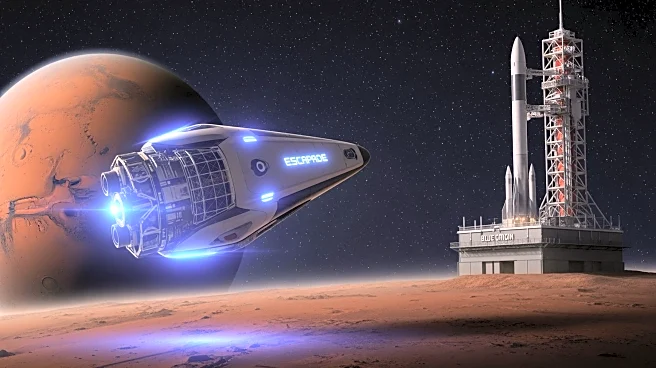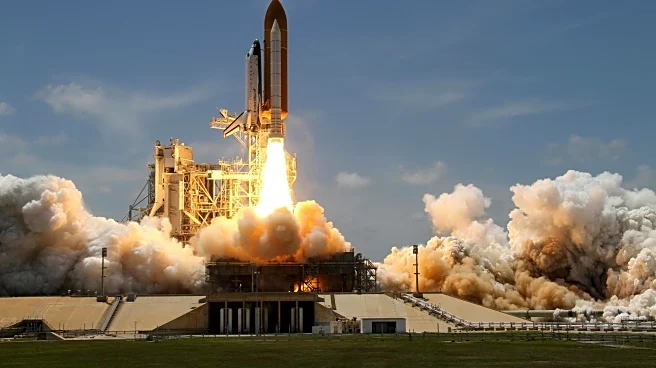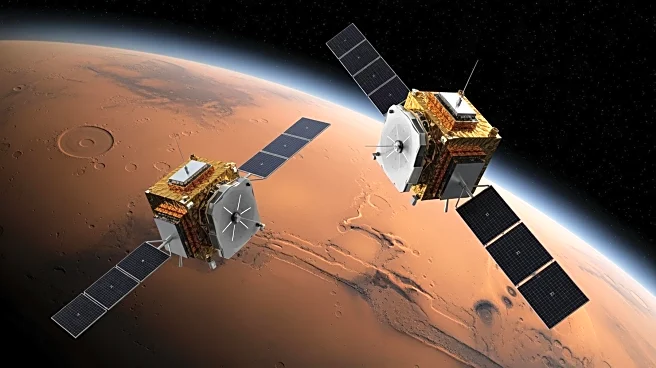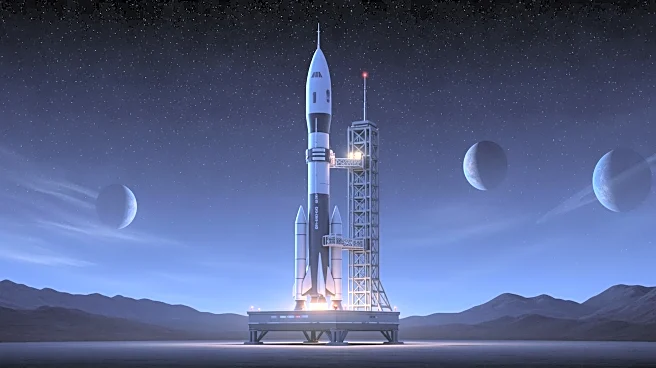What's Happening?
NASA, in collaboration with Blue Origin and UC Berkeley, is launching the ESCAPADE mission to Mars, aiming to study the planet's magnetosphere. The mission involves two orbiters, Blue and Gold, which will
be launched by Blue Origin's New Glenn rocket. The orbiters will spend a year at the L2 Earth-Sun Lagrange point before heading to Mars, with arrival expected by November 2027. This mission is part of NASA's effort to conduct low-cost planetary exploration, with a budget under $80 million.
Why It's Important?
ESCAPADE represents NASA's lowest-cost mission to Mars, potentially setting a precedent for future affordable space exploration. Understanding Mars' magnetosphere is crucial for unraveling the planet's atmospheric history and assessing its habitability. The mission's success could lead to more frequent and cost-effective Mars missions, advancing scientific knowledge and paving the way for human exploration. Blue Origin's involvement highlights the increasing role of private companies in space missions, which could drive innovation and reduce costs.
Beyond the Headlines
The mission's budget constraints have posed challenges, but overcoming them could demonstrate the viability of low-cost space exploration. The collaboration between NASA, Blue Origin, and UC Berkeley showcases the potential for partnerships in advancing space science. Success in this mission could encourage more investment in small-scale, high-value missions, broadening the scope of planetary research.












